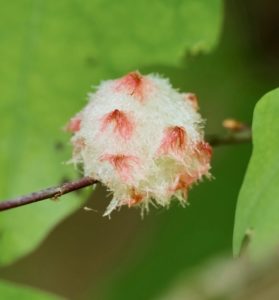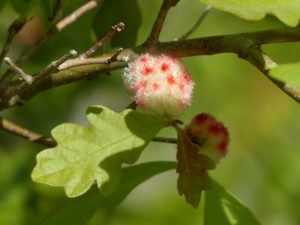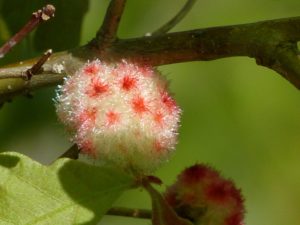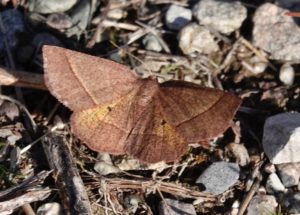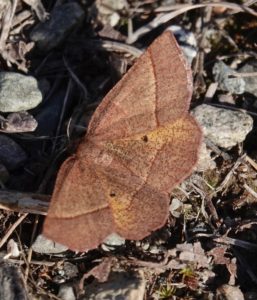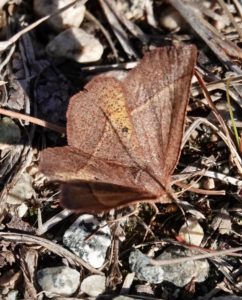Sightings – Insects and Spiders
Observer: Paul Lauenstein
Observation Date: 5/30/10
Observation Time: 3:50 p.m.
Observation Location: Moose Hill Audubon Wildlife Sanctuary
Common Name: Tiger Swallowtail butterfly
Scientific Name: Papilio glaucus
Comments: Females are dimorphic. The yellow morph differs from the male in having a blue postmedian area on the dorsal hindwing. In the dark morph, the areas that are normally yellow are replaced with dark gray or black.
More Information: Wikipedia
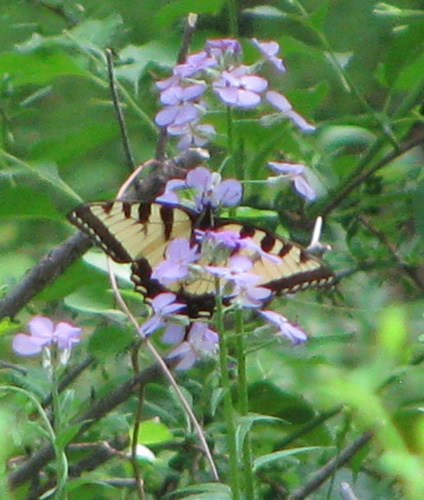
Observer: Paul Lauenstein
Observation Date: 7/17/13
Observation Time: 1:30 p.m.
Observation Location: 4 Gavins Pond Road (back yard)
Common Name: Tiger Swallowtail butterfly
Scientific Name: Papilio glaucus
Comments: As I was picking raspberries in the garden, I saw this gorgeous butterfly, so I ran inside and grabbed my camera.
More Information: Wikipedia
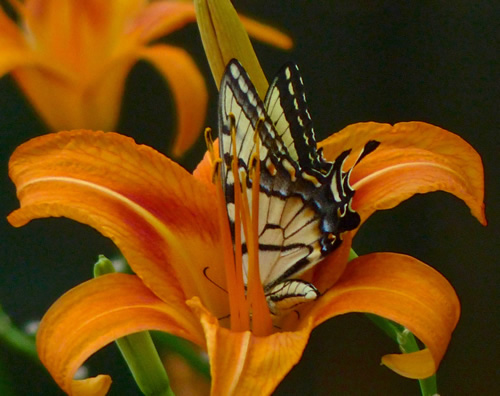
Observer: Paul Lauenstein
Observation Date: 7/25/14
Observation Time: 3:20 p.m.
Observation Location: Gavins Pond Dam
Common Name: Tiger Swallowtail butterfly
Scientific Name: Papilio glaucus
Comments: This butterfly posed nicely on a thistle blossom.
More Information: Wikipedia
Observer: Paul Lauenstein
Observation Date: 7/26/11
Observation Time: 1:30 p.m.
Observation Location: dirt road leading to the Gavins Pond dam
Common Name:Tiger Swallowtail butterfly
Scientific Name: Papilio glaucus
Comments: This butterfly was so preoccupied with feeding on some decomposing organic matter that I was able to approach within a few inches to take this photo.
More Information: Butterflies and Moths of North America
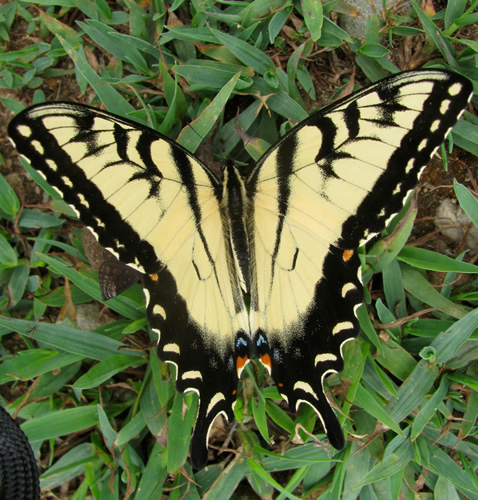
Observer: Kurt Buermann
Observation Date: 7/28/17
Observation Time: N/A
Observation Location: In our yard (Furnace Street) on a spicebush shrub
Common Name: Tiger Swallowtail butterfly
Scientific Name: Papilio glaucus
Comments: fairly common large butterfly
More Information: Butterflies and Moths of North America
Observer: Kurt Buermann
Observation Date: 7/31/16
Observation Time: N/A
Observation Location: Furnace Street
Common Name: Tiger Swallowtail butterfly
Scientific Name: Papilio glaucus
Comments: A common butterfly whose range stretches along the entire U.S. Atlantic coast and as far west as Texas. Having the ability to utilize a number of host plants and habitats this species does well and is not threatened.
More Information: Wikipedia
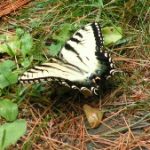
Observer: Bruce Lewis
Observation Date: 7/22/23
Observation Time: 3:00 p.m.
Observation Location: Moose Hill St.
Common Name: Tomentose Burying Beetle
Scientific Name: Nicrophorus tomentosus
Comments: I observed this beetle consuming a dead animal on Moose Hill St.
The beetle belongs to the family Silphidae, which are carrion beetles. The beetles have sensitive antennae that contain olfactory organs. Thus, the beetle can locate dead animals and then as the name suggests, can bury them. However, unlike other burying beetles, N. tomentosus does not completely bury these brood carcasses. They instead dig a shallow hole under the carcass and cover it with leaf litter. Recognition of these beetles can be distinguished by its black color with orange markings on the wing covers (elytra).
More Information: Wikipedia
Observer: Paul Lauenstein
Observation Date: 8/13/20
Observation Time: 1:52 p.m.
Observation Location: Mountain St.
Common Name: Tree Cricket
Scientific Name: Oecanthus spp.
Comments: The tree cricket is also known as poor man’s thermometer, because if you count the number of chirps in 15 seconds and add 37 you get the temperature close to the Fahrenheit temperature outdoors.
More Information: Wikipedia
Observer: Paul Lauenstein
Observation Date: 9/26/12
Observation Time: 1:35 p.m.
Observation Location: Gavins Pond Road (bridge near soccer fields)
Common Name: Tree Cricket
Scientific Name: Oecanthus spp.
Comments: The tree cricket is also known as poor man’s thermometer. It is because if you count the number of chirps in 15 seconds and add 37 you get the temperature close to the Fahrenheit temperature outdoors.
More Information: Wikipedia
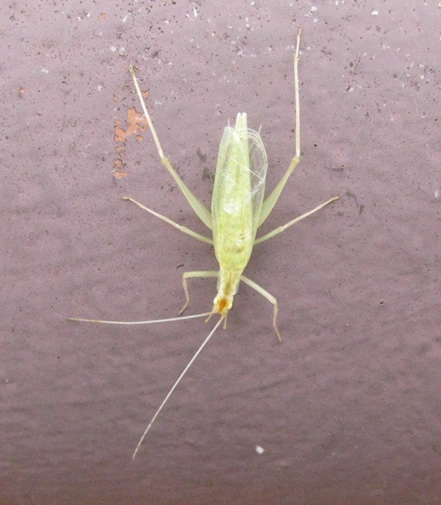
Observer: Paul Lauenstein
Observation Date: 6/19/13
Observation Time: 2:40 p.m.
Observation Location: Gavins Pond Dam
Common Name: Turquoise Bluet damselfly
Scientific Name: Enallagma divagans
More Photos: The Hibbits Network
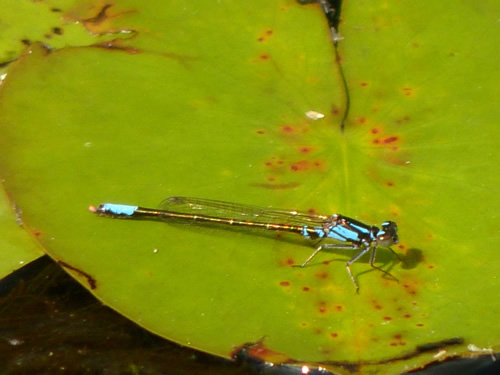
Observer: Paul Lauenstein
Observation Date: 6/2/11
Observation Time: 2:20 p.m.
Observation Location: Gavins Pond Dam
Common Name: Turquoise Bluet damselfly
Scientific Name: Enallagma divagans
Comments: The final two shots are of a mating pair.
More Information: BugGuide.net
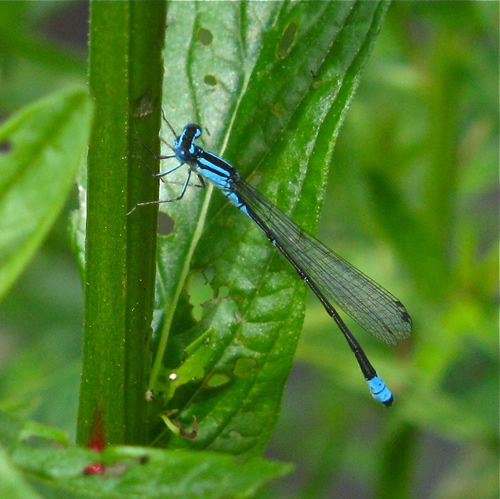
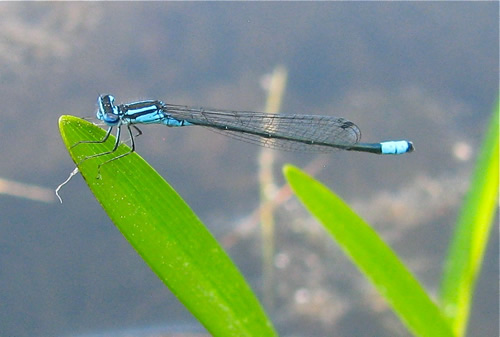
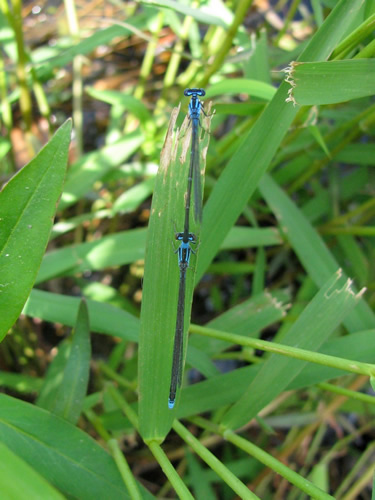
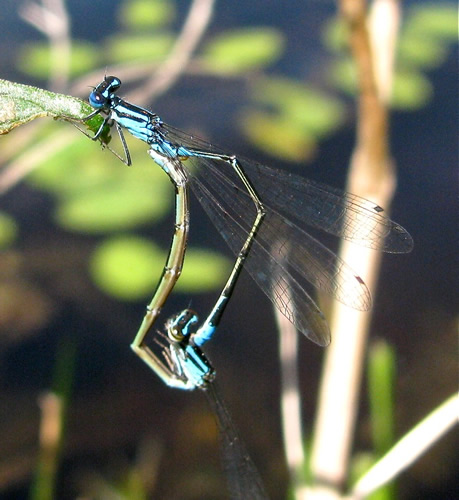
Observer: Paul Lauenstein
Observation Date: 7/7/18
Observation Time: 12:35 p.m.
Observation Location: Moose Hill Farm (TTOR)
Common Name: Twelve-spotted Skimmer dragonfly (female)
Scientific Name: Libellula pulchella
Comments: This species of dragonfly is relatively large. Lots of different species of dragonflies live in Sharon. Can you find one that’s not already recorded on this web site?
More Information: Ecobirder
Observer: Paul Lauenstein
Observation Date: 7/30/13
Observation Time: 3:35 p.m.
Observation Location: Gavins Pond Road near soccer fields
Common Name: Twelve-spotted Skimmer dragonfly (female)
Scientific Name: Libellula pulchella
Comments: This species of dragonfly is relatively large. Lots of different species of dragonflies live in Sharon. Can you find and phoyograph one that’s not already recorded on this web site?
More Information: Ecobirder
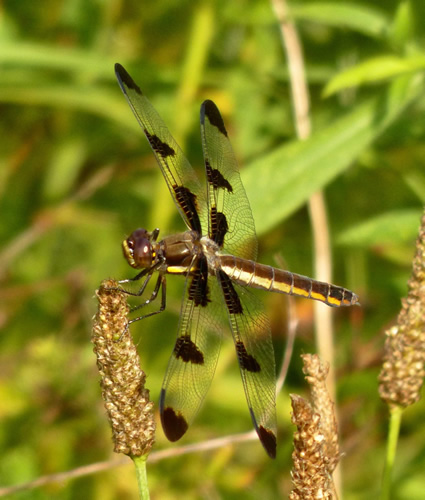
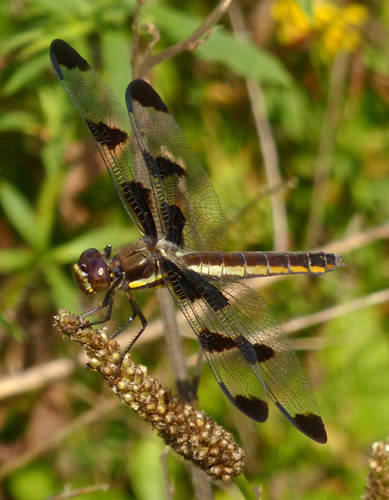
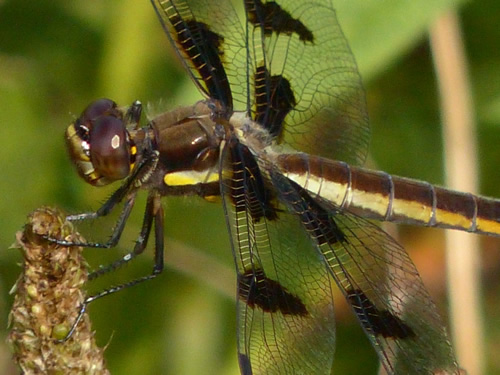
Observer: Paul Lauenstein
Observation Date: 8/11/13
Observation Time: 4:45 p.m.
Observation Location: Gavins Pond Dam
Common Name: Two-striped Grasshopper
Scientific Name: Melanoplus bivittatus
Comments: This grasshopper is named for the two stripes that run down its back. It is a common agricultural pest.
More Information: Wikipedia
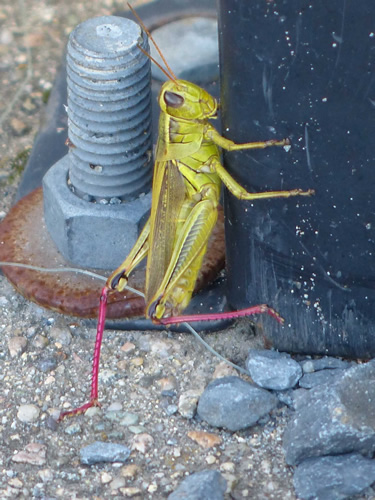
Observer: Amy Waters
Observation Date: 9/2/08
Observation Location:
Common Name: Unicorn Caterpillar
Scientific Name: Schizura unicornis
Comments: This Unicorn Caterpillar may have crawled off a blueberry bush. It also likes hickory, birch, maple, cherry, oak, sweet pepperbush, witch hazel, and many more woody shrubs and trees. Its range is from Canada to Florida and Texas. It will turn into a moth. Its family is Prominents – Notodontidae.
More Information: University of Missouri
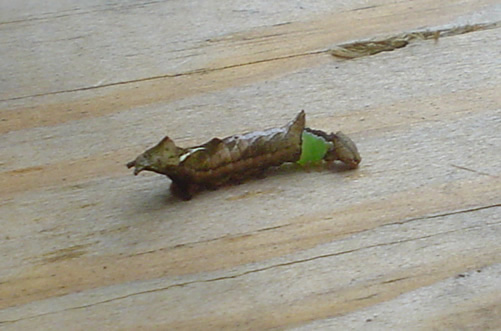
Observer: John Baur
Observation Date: 7/21/23
Observation Time: 4:00 p.m.
Observation Location: Moose Hill (under power lines)
Common Name: unknown wasp species
Scientific Name: Euodynerus undescribed species F
Comments: This small wasp has been identified as a known species that has not been formally described. As such, it is currently known as “Euodynerus undescribed species F”. Once it has been formally described it will be given a normal name, but that could take years.
More information: Bugguide.net
Observer: Paul Lauenstein
Observation Date: 6/20/11
Observation Time: 5:05 p.m.
Observation Location: Gavins Pond Dam
Common Name: Variable Dancer damselfly
Scientific Name: Argia fumipennis
Comments: Note the forked shoulder stripe, overall violet, with blue at the end of the abdomen. The last photo is a female.
More Information: Wisonsin Odonata Survey
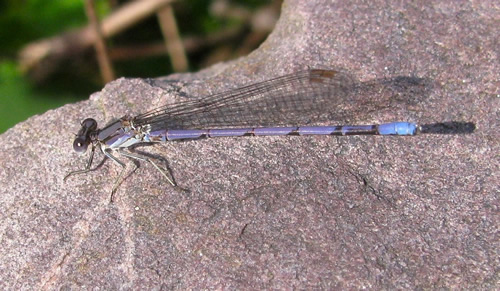
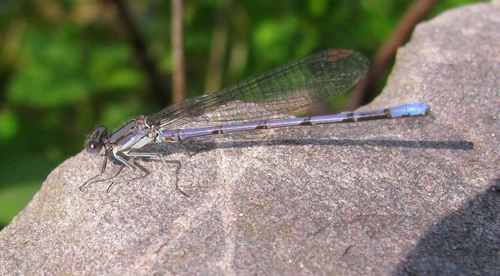
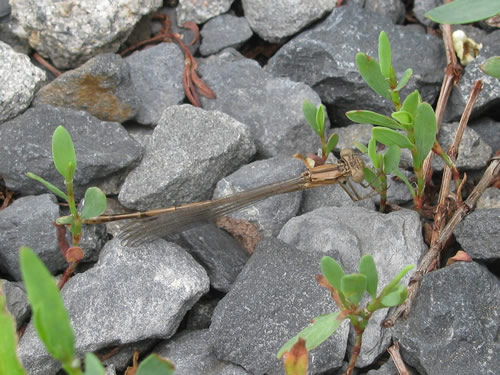
Observer: Paul Lauenstein
Observation Date: 5/19/13
Observation Time: 3:20 p.m.
Observation Location: Gavins Pond area
Common Name: Velvet Ant
Scientific Name: Pseudomethoca simillima
Comments: This ant-like creature is not an ant at all, but rather a wingless wasp. It can sting you, so don’t pick it up!
Watch (and listen) to a velvet ant in action.
More Information: The Backyard Arthropod Project
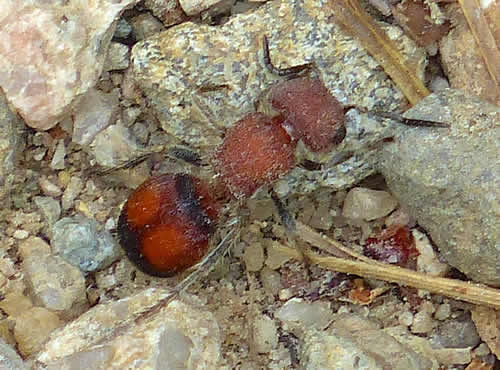
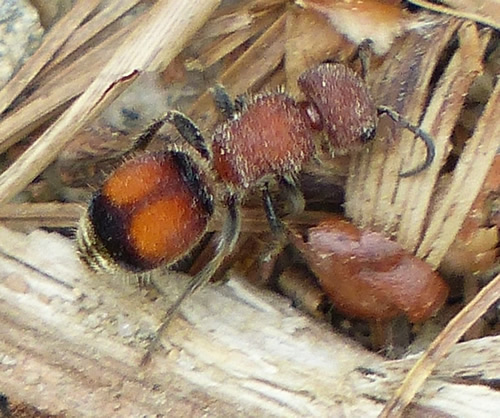
Observer: Paul Lauenstein
Observation Date: 5/21/10
Observation Time: 8:20 a.m.
Observation Location: Gavins Pond Road
Common Name: Viceroy Butterfly
Scientific Name: Limenitis archippus
Comments: Smaller than a monarch, with a characteristic black line across the hind wings.
More Information: NatureWorks
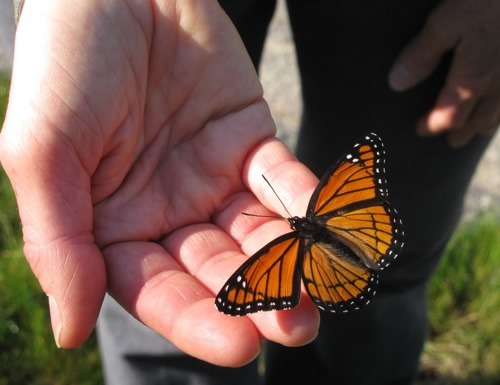
Observer: Zahava Friedman
Observation Date: 6/22/20
Observation Time: 10:40 a.m.
Observation Location: near Gavins Pond
Common Name: Viceroy butterfly
Scientific Name: Limenitis archippus
Comments: Viceroys are smaller than the famous migrating monarchs, and the black markings are different. Note the curved black line on the hind wings. Monarchs do not have this line.
Viceroys are brush-footed butterflies, which have tiny, hairy forelegs that look more like brushes than feet and are not used for walking.
More Information: NatureWorks
Observer: Paul Lauenstein
Observation Date: 7/17/13
Observation Time: 3:00 p.m.
Observation Location: Gavins Pond area near soccer parking area
Common Name: Viceroy butterfly
Scientific Name: Limenitis archippus
Comments: This butterfly is smaller than the famous migrating monarchs, and the black markings are different. Note the black line on the hind wings. Monarchs do not have this line.
More Information: NatureWorks
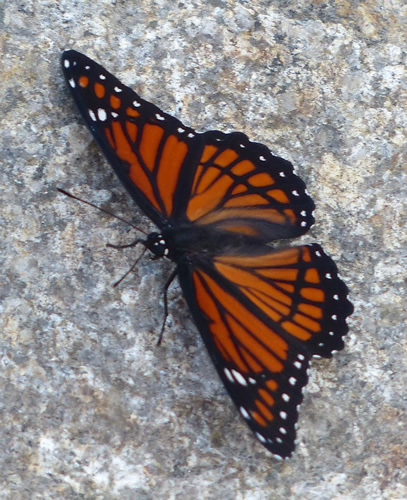
Observer: Paul Lauenstein
Observation Date: 6/29/11
Observation Time: 10:20 a.m.
Observation Location: near outflow pool at Gavins Pond Dam
Common Name: Virginian Tiger Moth caterpillar
Scientific Name: Spilosoma virginica
Comments: This caterpillar, which was chewing on grape leaves, will metamorphose into a beautiful white moth.
More Information: Moths in a Connecticut Yard
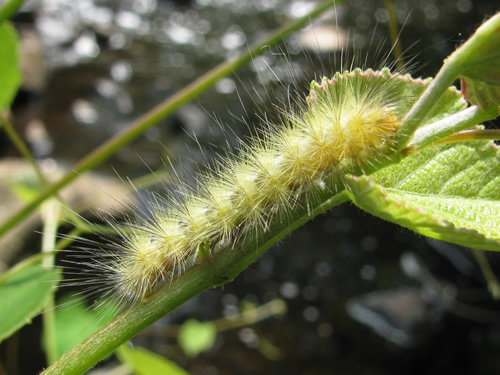
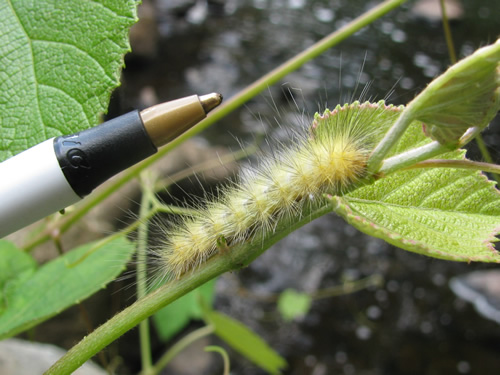
Observer: Gaurav Shah
Observation Date: 4/4/21
Observation Time: 2:00 p.m.
Observation Location: Moose Hill Audubon Wildlife Sanctuary
Common Name: Water Beetle
Scientific Name: tribe Hyphydrini, subfamily Hydroporinae, family Dytiscidae
Comments: This is the first BugGuide.net report of this tribe and genus in Massachusetts.
More information: BugGuide.net and Wikipedia
Observer: Paul Lauenstein
Observation Date: 7/7/18
Observation Time: 1:45 p.m.
Observation Location: Moose Hill Farm (TTOR)
Common Name: Weevil Wasp
Scientific Name: Cerceris
Comments: Members of the genus Cerceris hunt weevils and other beetles. Females dig nests in the ground along roads or in areas with loose sand or soil like baseball fields, parks and beaches. They compact the material and create cells where they lay a fertilized egg. They fly off, in search of future food for their larvae.
Female Weevil Wasps bite their prey and paralyze them. The weevil or beetle is then brought back to the nest and stuffed inside a cell where they will remain paralyzed. A hatching wasp larva will immediately begin feeding on the living, paralyzed weevil or beetle. Once the wasp has grown, it will pupate into its adult form and leave the nest.
More Information: Insect Identification
Observer: Paul Lauenstein
Observation Date: 8/10/23
Observation Time: 11:40 a.m.
Observation Location: Gavins Pond Rd.
Common Name: White Admiral butterfly (same species as Red-spotted Purple Admiral – see below)
Scientific Name: Limenitis arthemis astyanax
Comments: The white Admiral butterfly is a North American species in the genus Limenitis. It has been studied for its evolution of mimicry, and for the several stable hybrid wing patterns within this nominal species; it is one of the most dramatic examples of hybridization between non-mimetic and mimetic populations.
L. arthemis can be split into two major groups, mainly based on one physical characteristic: the presence or absence of a white band along the wings. Individuals of the northern group, called White Admirals, have a conspicuous white band that traverse both the dorsal and ventral surfaces of the wing, while those of the southern group, called Red-spotted Purple Admirals, lack that trait as they have evolved to mimic the poisonous pipevine swallowtail (Battus philenor). Due to overlap in distribution among the two major groups, subspecies are numerous as hybridization occurs frequently.
More Information: Wikipedia
Observer: Josh Simons
Observation Date: 9/7/2020
Observation Time: 11:00 a.m.
Observation Location: Moose Hill area
Common Name: White-banded Crab Spider
Scientific Name: Misumessus formosipes
Comments: These spiders (also called flower spiders) can change color to match the flowers they are hunting in. Cool.
More Information: iNaturalist
Observer: Paul Lauenstein
Observation Date: 5/29/10
Observation Time: 3:15 p.m.
Observation Location: Gavins Pond
Common Name: White Corporal dragonfly
Scientific Name: Libellula (Ladona) exusta
Comments: Small, most commonly perches on the ground. Adult males have a white abdomen.
More Information: New Jersey Odes
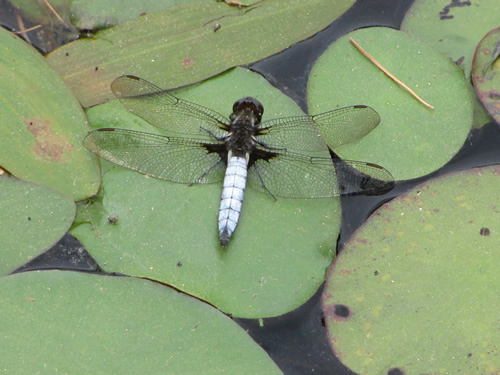
Observer: Vin Zollo
Observation Date: 6/15/13
Observation Time: 3:45 p.m.
Observation Location: Moose Hill Audubon Wildlife Sanctuary
Common Name: White Corporal dragonfly
Scientific Name: Ladona exusta
Comments: Small, most commonly perches on the ground. Adult males have a white abdomen.
More Information: New Jersey Odes
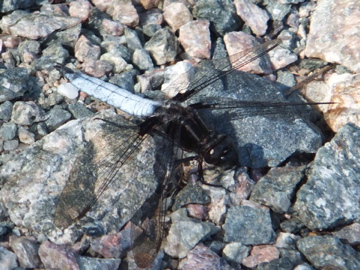
Observer: Paul Lauenstein
Observation Date: 5/25/11
Observation Time: 12:25 p.m.
Observation Location: Gavins Pond
Common Name: White Corporal dragonfly (female)
Scientific Name: Libellula (Ladona) exusta
Comments: The pale rusty abdomen indicates this is a young female. Older females have a drab white abdomen more similar to the males.
Found in fields and clearings near water. White corporals inhabit the northeast coastal plain into SE Canada. Fairly common in MA.
Males are territorial.
More Information: New Jersey Odes
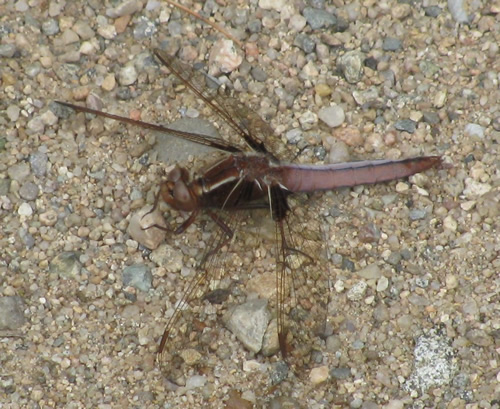
Observer: Paul Lauenstein
Observation Date: 5/26/14
Observation Time: 12:10 p.m.
Observation Location: Borderland State Park
Common Name: White Corporal dragonfly (female)
Scientific Name: Libellula (Ladona) exusta
Comments: Dragonflies eat insects. That’s a good thing because bat populations have plummeted due to a mysterious disease called white-nose.
More Information: White corporal dragonfly
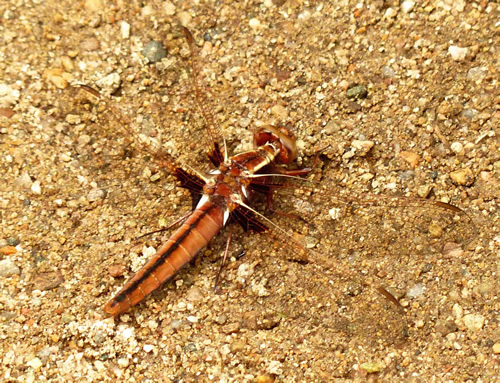
Observer: Josh Simons
Observation Date: 6/1/23
Observation Time: 9:45 a.m.
Observation Location: Moose Hill area
Common Name: White slant-line moth
Scientific Name: Tetracis cachexiata)
Comments: The caterpillars of the white slant-line moth are twig mimics, like other members of the Geometer family. Their brown, narrow bodies hold on to a branch at one end and stretch away from the branch to look like a twig.
More Information: Insect Identification
Observer: Paul Lauenstein
Observation Date: 7/8/13
Observation Time: 5:40 p.m.
Observation Location: Gavins Pond area
Common Name: White-faced Meadowhawk dragonfly
Scientific Name: Sympetrum obtrusum
Comments: Males are red. Very similar to Ruby Meadowhawk and Cherry-faced Meadowhawk. This species seems to be in decline.
More Information: Nature Search
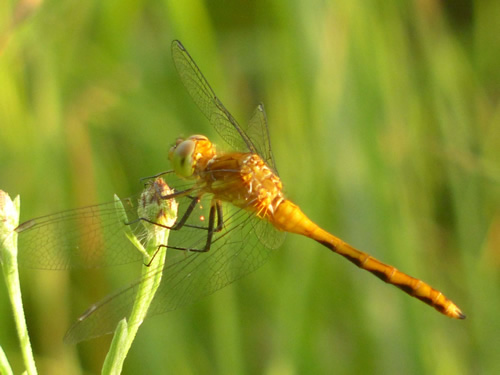
Two more photos taken 7/19/13 at about 5:30 where Turning Mill Brook flows under Wolomolopoag Street:
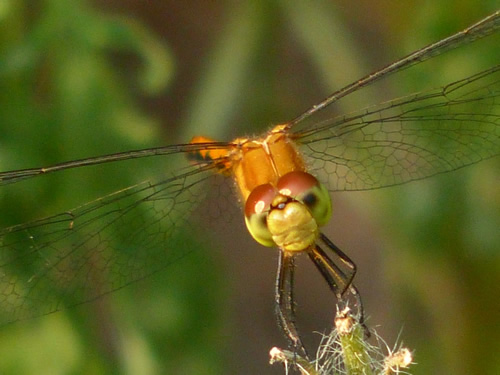
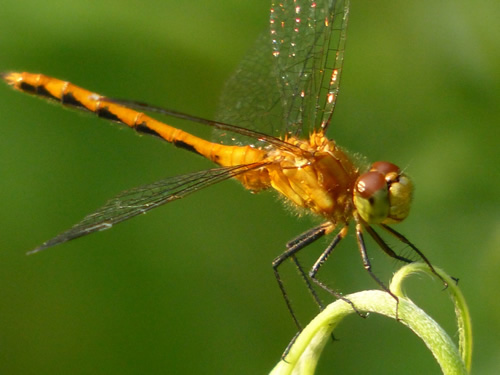
Observer: Paul Lauenstein
Observation Date: 8/11/12
Observation Time: 11:30 a.m.
Observation Location: Gavins Pond Road bridge over Billings Brook
Common Name: White-faced Meadowhawk dragonfly
Scientific Name: Sympetrum obtrusum
Comments: Adult males are identifiable by a distinctive pure white face and red body. Juveniles and younger females have a yellow abdomen. Older females have olive-brown or reddish-brown abdomen.
More Information: Wikipedia
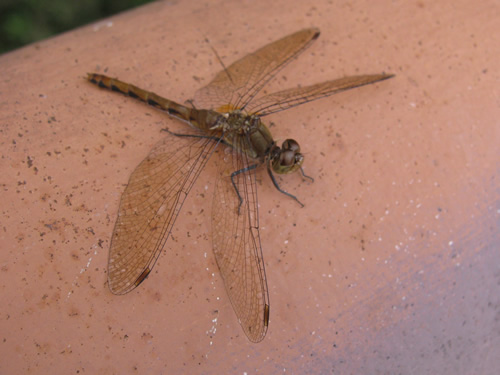
Observer: Paul Lauenstein
Observation Date: 8/15/18
Observation Time: 1:15 p.m.
Observation Location: Moose Hill Audubon Wildlife Sanctuary
Common Name: White-faced Meadowhawk dragonfly (male)
Scientific Name: Sympetrum obtrusum
Comments: Juveniles and females have yellow abdomens. Males are red. Similar to Ruby Meadowhawk and Cherry-faced Meadowhawk, but white-faced meadowhawks have a distinctive white face.
More Information: Wikipedia
Observer: Paul Lauenstein
Observation Date: 8/4/17
Observation Time: 1:55 p.m.
Observation Location: 4 Gavins Pond Road
Common Name: White-faced Meadowhawk dragonfly
Scientific Name: Sympetrum obtrusum
Comments: Juveniles and females have yellow abdomens. Males are red. Similar to Ruby Meadowhawk and Cherry-faced Meadowhawk, but white-faced meadowhawks have a distinctive white face.
More Information: Wikipedia
Observer: Paul Lauenstein
Observation Date: 7/3/10
Observation Time: 8:05 a.m.
Observation Location: near Gavins Pond
Common Name: Widow Skimmer dragonfly
Scientific Name: Libellula luctuosa
Comments: Odonates (dragonflies) are completely harmless – they do not sting or bite. Indeed, they are beneficial in the same way spiders and other predators are beneficial – they keep the burgeoning insect population in check.
More Information: North American Insects and Spiders
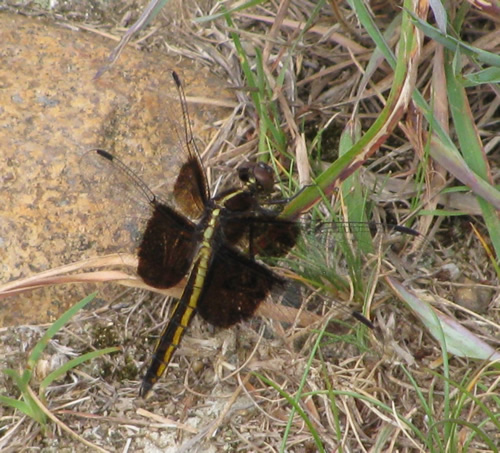
Observer: Paul Lauenstein
Observation Date: 7/31/11
Observation Time: 3:45 p.m.
Observation Location: Gavins Pond Road
Common Name: Widow Skimmer dragonfly
Scientific Name: Libellula luctuosa
Comments: The widow skimmer is famous for its pruinosity – the white, waxy coating on the dragonfly’s wings and abdomen. Dragonflies have excellent eyesight. Their compound eyes have up to 30,000 facets, each of which is a separate light-sensing organ or ommatidium, arranged to give nearly a 360° field of vision.
More Information: CirrusImage
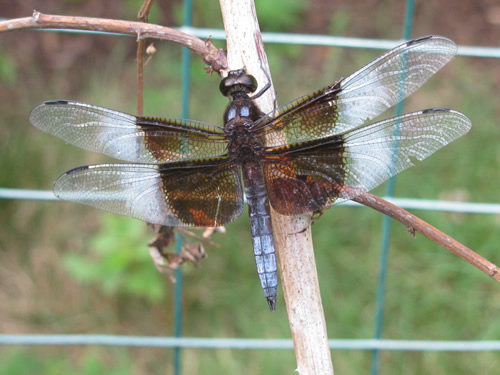
Observer: Josh Simons
Observation Date: 7/7/20
Observation Time: 1:30 p.m.
Observation Location: Moose Hill area
Common Name: Widow Underwing moth
Scientific Name: Catocala vidua
Comments: The widow underwing (Catocala vidua) is a moth of the Erebidae family. It is found from southern Ontario, into Maine, New Hampshire and Connecticut, south at least to Tennessee, Georgia and Alabama, west to Texas and Oklahoma, and north to Wisconsin.
More Information: iNaturalist and Bugguide.net and Discover Life and EverythingAbout.net
Observer: Paul Lauenstein
Observation Date: 6/25/11
Observation Time: 3:20 p.m.
Observation Location: Gavins Pond Dam
Common Name: Willow Leaf Beetle
Scientific Name: Plagiodera versicolora
Comments: I got help identifying this tiny beetle at www.bugguide.net. I set up a free account and uploaded my photo. In a few days I received an email from one of their entomologists with the identification. Given that there are thousands of species of insects, bugguide.net is a valuable resource for identification.
More Information: BugWood
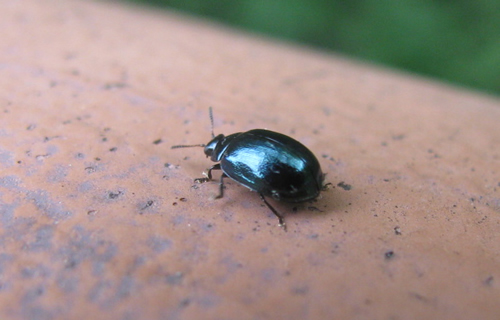
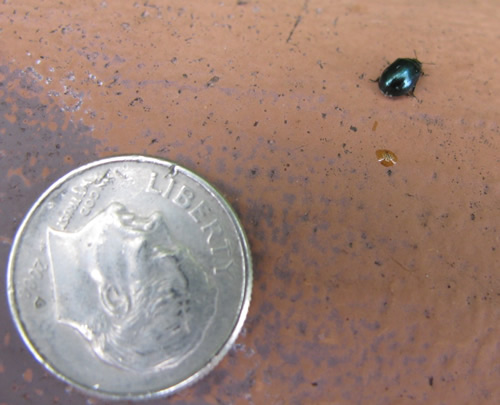
Observer: Josh Simons
Observation Date: 3/26/21
Observation Time: 4:30 p.m.
Observation Place: Moose Hill area
Common Name: Wolf spider
Scientific Name: Gladicosa gulosa
Comments: I would have been happier finding this wolf spider outside rather than in our mudroom. I captured it and deposited it outside — before reading that some wolf spiders can be aggressive towards humans, that their bite can take a few weeks to heal, and that their eyes glow green at night. Oh, and that they have fangs.
More Information: Wikipedia
Observer: Paul Lauenstein
Observation Date: 6/9/19
Observation Time: 3:55 p.m.
Observation Place: trail from Brook Road to Devil’s Rock
Common Name: Wolf spider
Scientific Name: Gladicosa gulosa
Comments: This spider does not make a web.
More Information: Sweating the Small Stuff
Observer: Paul Lauenstein
Observation Date: 7/13/13
Observation Time: 11:05 a.m.
Observation Location: Gavins Pond area
Common Name: Wood Nymph butterfly
Scientific Name: Cercyonis pegala
Comments: Note the “pink earth” lichen in the background of the upper photo.
More information: Mass Audubon Butterfly Atlas
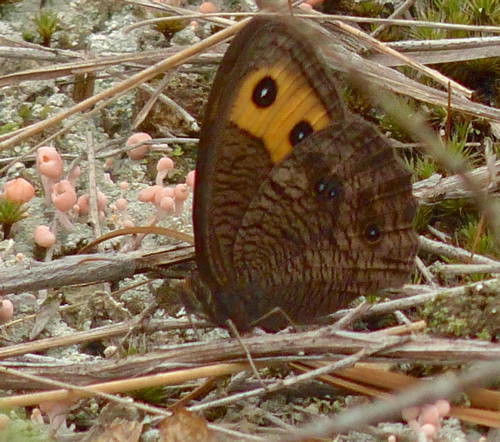
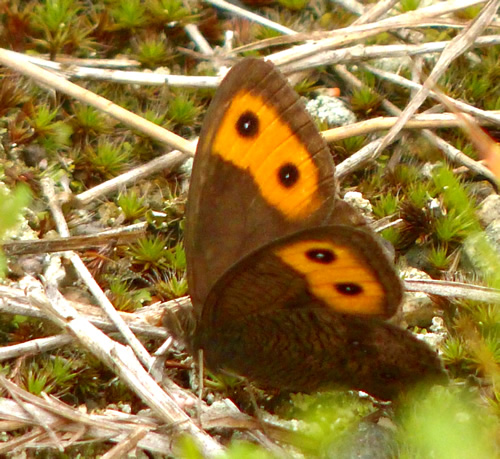
Observer: Paul Lauenstein
Observation Date: 7/27/13
Observation Time: 2:43 p.m.
Observation Location: Gavins Pond area
Common Name: Wood Nymph butterfly
Scientific Name: Cercyonis pegala
Comments: It’s a thrill to get so close to something wild and beautiful.
More information: Mass Audubon Butterfly Atlas
Observer: Paul Lauenstein
Observation Date: 8/13/20
Observation Time: 3:20 p.m.
Observation Location: Mountain St.
Common Name: Wood Nymph butterfly
Scientific Name: Cercyonis pegala
Comments: Despite its name the Wood Nymph butterfly prefers open areas including fields, wet meadows, salt marshes, and bogs. It also inhabits open woods and ventures along well lit woodland trails.
More information: Mass Audubon Butterfly Atlas
Observer: Paul Lauenstein
Observation Date: 8/25/12
Observation Time: 3:00 p.m.
Observation Location: Gavins Pond Road – soccer field parking lot
Common Name: Wood Nymph butterfly
Scientific Name: Cercyonis pegala
Comments: This striking wood nymph butterfly was a challenge to photograph, but with persistence I was able to get close enough to get this shot.
More Information: Massachusetts Butterfly Club
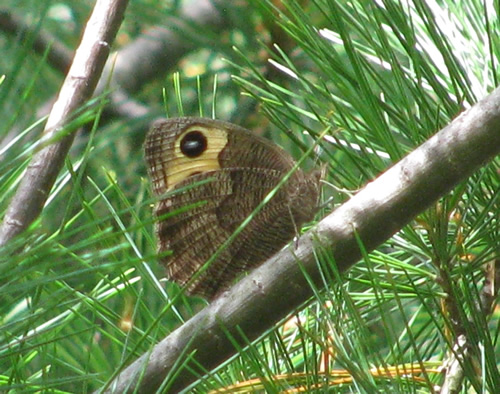
Observer: Josh Simons
Observation Date: 5/21/23
Observation Time: 3:00 p.m.
Observation Location: near Gavins Pond
Common Name: Wool Sower Gall Wasp
Scientific Name: Callirhytis seminator
Comments: Pink-spotted, white cottony wool sower galls are about the size of a ping-pong ball and are produced by a tiny species of Cynipid wasp, Callirhytis seminator, and are most commonly found on white oaks.
More Information: The UnderStory
Observer: Paul Lauenstein
Observation Date: 5/27/10
Observation Time: 4:25 p.m.
Observation Location: Beneath the high tension lines near So. Walpole St.
Common Name: Wool Sower Gall Wasp
Scientific Name: Callirhytis seminator
Comments: Pink-spotted, white cottony wool sower galls are about the size of a ping-pong ball and are produced by a tiny species of Cynipid wasp, Callirhytis seminator, and are most commonly found on white oaks.
More Information: The UnderStory
Observer: Paul Lauenstein
Observation Date: 5/20/20
Observation Time: 5:15 p.m.
Observation Location: under high tension wires across the street from Ward’s Berry Farm
Common Name: Yellow-washed metarranthis moth
Scientific Name: Metarranthis obfirmaria
Comments: I spotted this brown moth on the dirt road under the high tension wires. Moths typically have bigger antennae than butterflies. They can be hard to identify. I got help with identification of this specimen at Bugguide.net
More Information: North American Moth Photographers Group

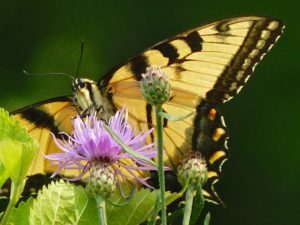
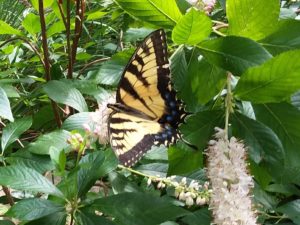
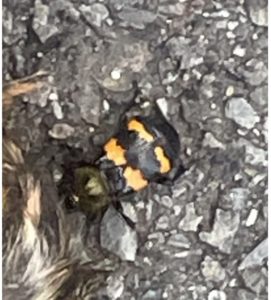
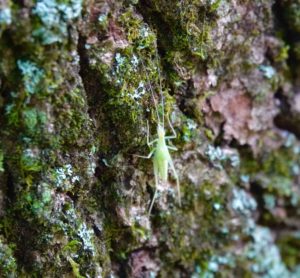
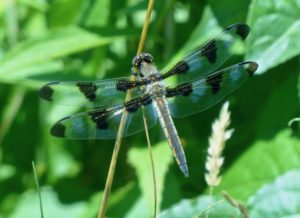
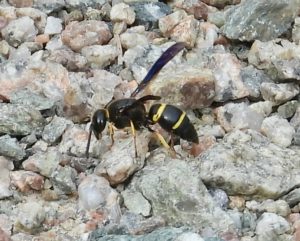
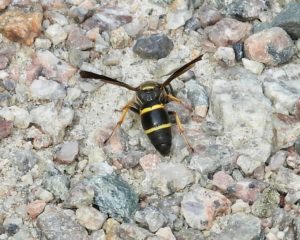
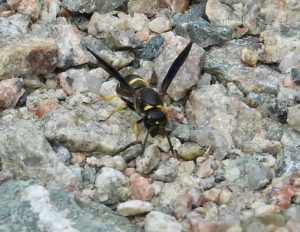
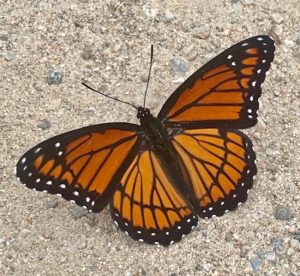
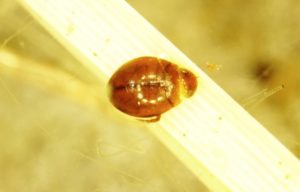
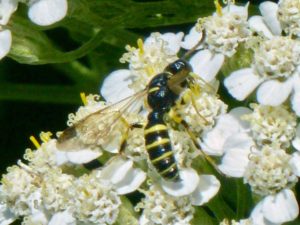
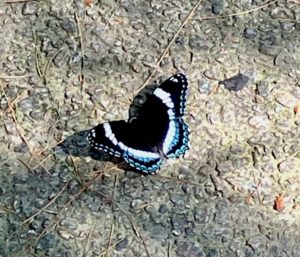
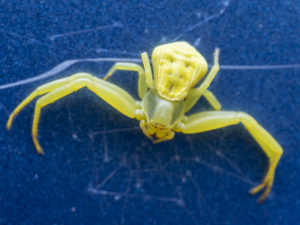
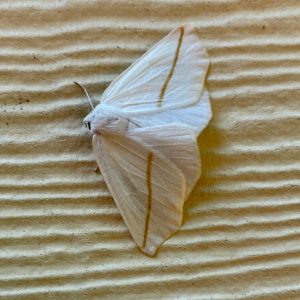
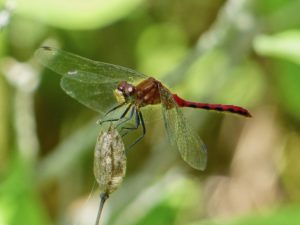
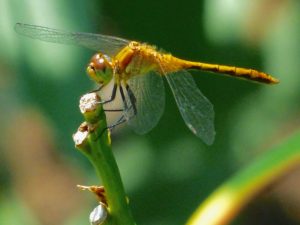
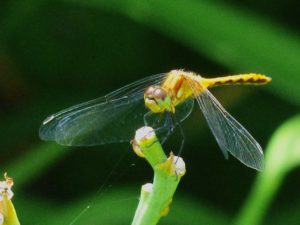
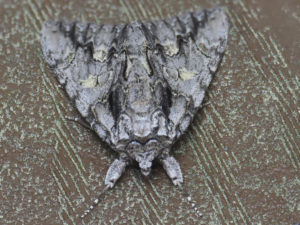
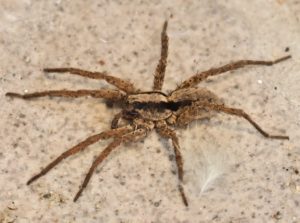
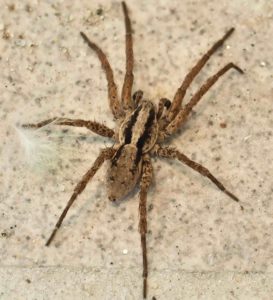
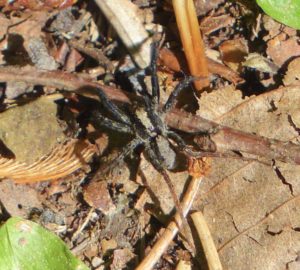
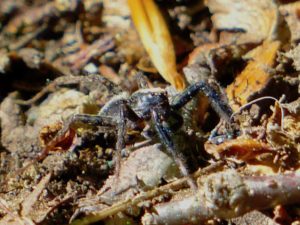
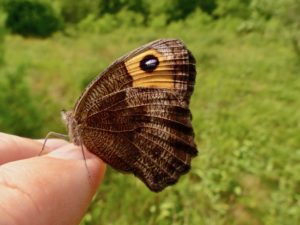
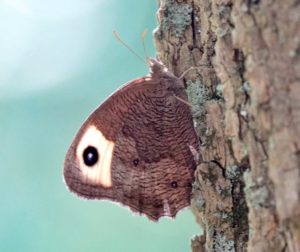 3
3